Domestic holographic technology research report-Dr. Ding Ru
2020-12-16
1 Introduction
With the help of Wanfang's innovative data intelligence tools (data statistics as of December 04, 2020), this report has made a systematic and comprehensive analysis of the distribution, technological evolution, scientific research status, and achievement transformation status of domestic holographic technology-related scientific research activities. . This report not only objectively presents the development context of holographic technology in my country for more than ten years, but also helps enterprises to open up the upstream and downstream industrial chain of the holographic industry, lay out the direction of technology research and development, and gather professional talents. Not only that, but it can also timely discover the scientific research results of universities and research institutes, and carry out efficient transformation in accordance with market demand, which will help break the information island of technology and industry and realize scientific and effective production, education and research activities.
2 Introduction to holographic technology
2.1 Concept description
Holography has developed rapidly since the advent of lasers in the 1960s. The basic mechanism is to use light wave interferometry to simultaneously record the amplitude and phase of the object light wave. Since the holographic re-phenomenon light wave retains all the amplitude and phase information of the original object light wave, the re-phenomenon has exactly the same three-dimensional characteristics as the original object. After the 1980s, the rapid development of laser holography technology has become a new high-tech industry. In the laser holographic technology, the holographic display technology has attracted much attention because it is closer to people's daily life. It can not only produce vivid three-dimensional pictures to beautify people's lives, but also use them for securities, commodity anti-counterfeiting, commodity advertising, promotion, art pictures, exhibitions, book illustrations and art decoration, packaging, interior decoration, medicine, criminal investigation , Physical evidence photography and identification, architectural three-dimensional imaging, scientific research, teaching, information exchange, portrait three-dimensional photography and three-dimensional film and television, and many other fields, in recent years have also developed into wide-format holographic packaging materials and have been widely used.
Holographic display technology: The reason why humans can feel the three-dimensional sense is that their eyes observe objects horizontally, and the observation angles are slightly different. The images are side by side after viewing, with a distance of about 6 cm between the two eyes. The combination of reflection and visual psychological response produces a three-dimensional sense. According to this principle, 3D display technologies can be divided into two types: one is to use the parallax characteristics of the human eye to generate a stereoscopic effect; the other is to display real 3D stereoscopic images in space, such as stereoscopic imaging based on holographic imaging technology. Holographic images are true three-dimensional images. Users do not need to wear three-dimensional glasses or any other auxiliary equipment to watch the images with naked eyes from different angles.
2.2 History
In 1947, Nobel Prize winner Dennis Gabor first proposed the imaging concept of Holography when he was studying electron microscopes. The imaging of holography uses the principle of light interference to record the specific light waves emitted by the object in the form of clauses and reproduce it under special conditions to form a realistic three-dimensional image. This image records the amplitude, phase, brightness, and brightness of the object. Information such as shape distribution is called holography, which means that it contains all the information.
However, the imaging quality of holographic images was very poor at that time, only the mercury lamp was used to record holographic information. Because of the poor performance of the mercury lamp, the coaxial holographic diffraction wave could not be separated, so this technology stagnated for decades and progressed slowly.
After that, holographic imaging was based on the "chronological limitations" of physical media and imaging technology, and experienced the "off-axis holography" in 1962 (improving imaging quality) and the "rainbow holography" in 1969 (reducing the requirements for light sources) ) Two important historical stages. However, this is still in the category of traditional holographic technology. Traditional holographic technology uses silver halide and other materials to make photosensitive film to complete post-processing such as fixing of holographic image information. However, modern holographic technology materials use new photosensitive media, such as photoconductive plastics, photorefractive crystals, photopolymers, etc., which can not only save the post-processing steps in traditional technology, but also the information capacity and diffraction rate are better than traditional materials Higher.
However, regardless of whether it is a photosensitive film or a new type of photosensitive medium, it is necessary to reproduce the recorded wavefront information through light wave diffraction, and directly observe the reproduction result with the naked eye. This makes it difficult to quantitatively analyze the accuracy of the image and cannot form an accurate holographic image. In other words, the overcoming of materials and craftsmanship cannot fundamentally improve the accuracy of holographic images.
In the late 1960s, Goodman, Lawrence and others put forward a new concept of holography-digital holography technology, which created the era of precision holography technology.
In the 1990s, with the advent of high-resolution CCDs, people began to use CCDs and other photosensitive electronic components to replace traditional photosensitive films or new photosensitive media to record holograms, and digitally used computer-simulated optical diffraction to present images, making holograms The recording and reproduction of the real digitalization.
Digital holography technology is a combination of computer technology, holography technology and electronic imaging technology. It records the hologram through electronic components, omits the post-chemical processing of the image, saves a lot of time, and realizes the real-time processing of the image. At the same time, it can perform quantitative analysis of the digital image through a computer, obtain the intensity and phase distribution of the image through calculation, and simulate the superposition of multiple holograms and other operations.
3 Development status
3.1 Regional development
Through the regional scientific and technological achievements, the national natural science fund, and the output of patents, we can locate the hot spots in the field of holographic technology and understand the development of the technology field in various provinces, cities and regions.

Figure 1: The distribution status of holographic technology in various regions of the country
3.2 Industry Development
By displaying the annual output and overall trend of intellectual property rights of holographic technology in recent years, it is used to judge the development status and trend of holographic industry technology.
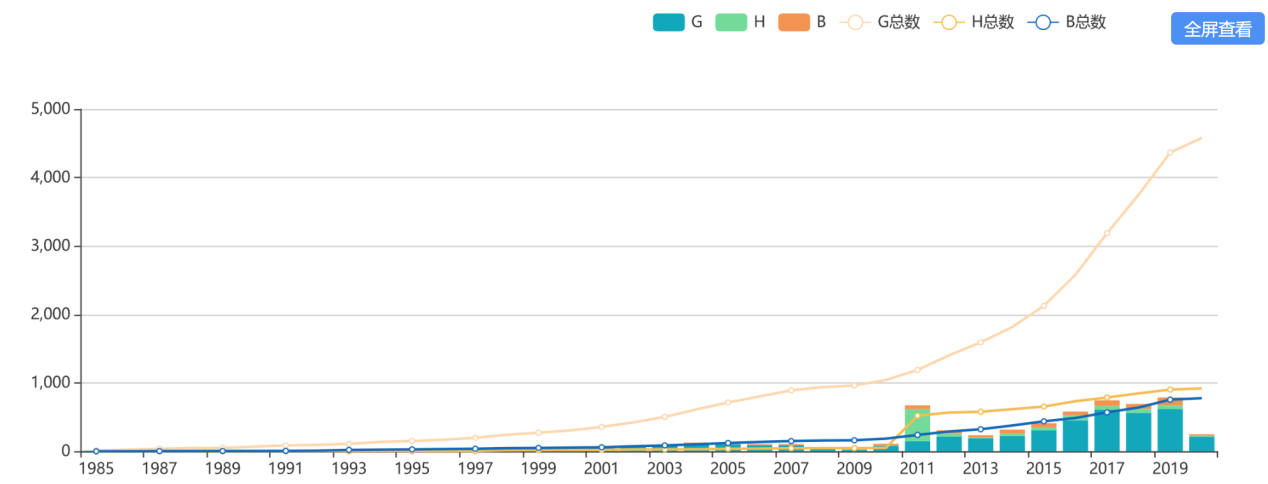
Figure 2: my country's holographic related patents and intellectual property rights from 1985 to 2020
3.3 Domestic basic research
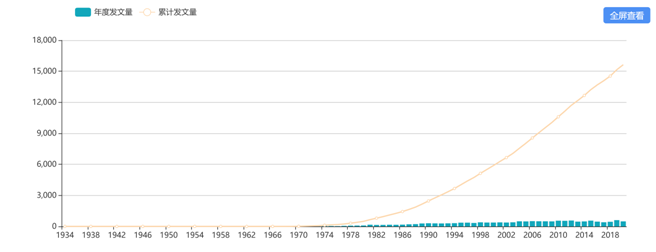
Figure 3: Chronological distribution list of domestic basic research on holographic technology
Year by year and accumulatively, the output of holographic technology points in basic scientific research papers is used to analyze and judge the research status and development trend of the technology in basic scientific research.
4 Technology evolution
Through the statistics of subject penetration, scientific research relevance, and technology evolution of this technology point, it is used to analyze the scientific research context and technology evolution law of the holographic technology point.
4.1 Subject penetration
The scientific research value is the sum of the patents, papers, awards, industry-university-research research results and events related to holographic technology. The larger the number of scientific research, the more concentrated the scientific research based on the subject; if there are large numbers of these two or more subjects, it may be an interdisciplinary research.
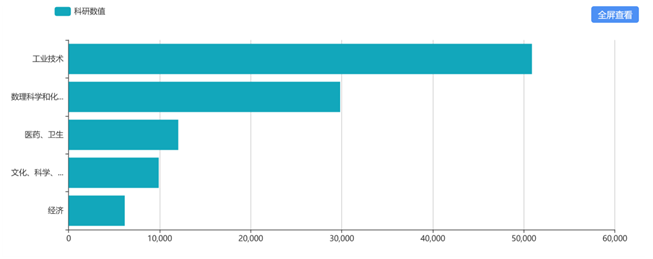
Figure 4: Scientific research values involved in major disciplines (bar graph)
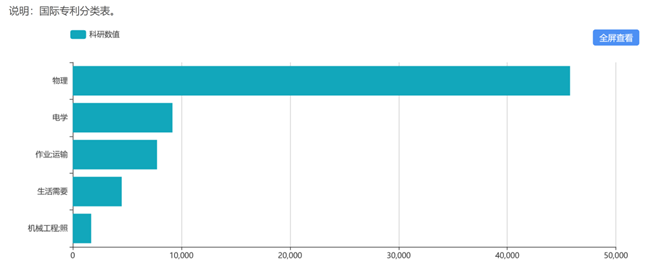
4.2 Technical relevance
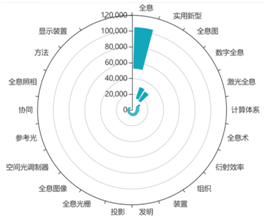
Figure 6: Shows the relevance of technological research. The larger the value, the higher the scientific research relevance of technical points.
4.3 Technology evolution
According to the statistical analysis of popular technology points of holographic technology in the past five years, the evolution of technology points in recent years is shown, and the scientific research context and evolution law are revealed. See Figure 7, where the technical points marked with red dots appear for the first time.
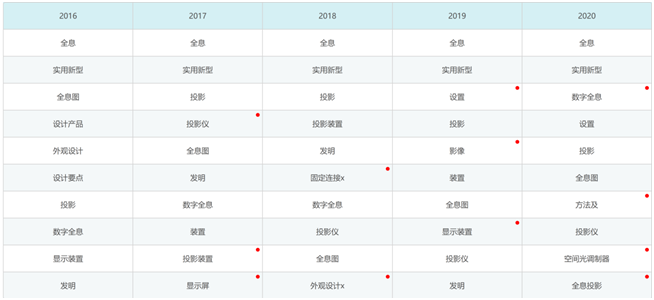
7
5 Transformation of results
Through the statistics of the related scientific and technological achievements and patent output of the application of this technological point, it is used to understand the current situation and trend analysis of the technological point in the transformation of achievements.
5.1 Scientific and technological achievements

Figure 8: Statistics of national and provincial scientific and technological achievements related to this technology by category
5.2 Patent output
Classify and count the patents related to holographic technology points, and display the latest related patent information. The following figure is a statistical analysis of holographic technology points by type and year. Users understand the status and trends of patents related to this technology.
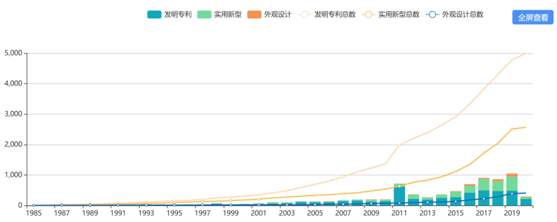
Figure 9: Patent type statistics table (bar graph)
6 Summary
Through the statistical analysis of domestic scientific research data, the development status, technological evolution, technology research and development trend, scientific research results and patent situation of holographic technology are explored, and the following conclusions can be initially obtained:
(1) Beijing, Shanghai, Guangdong, Shandong, Jiangsu, Hubei, Zhejiang and Shaanxi are the main areas of domestic holographic technology research and development.
(2) Since 2011, my country's holographic industry has begun to develop at a relatively rapid rate.
(3) The basic research of domestic holographic technology has been involved as early as before the founding of the People’s Republic of China. Until 1980, the number of basic research projects increased by several hundred per year; and since 2012, the number of academic papers published every year was 1,000 or more. the above.
(4) From the perspective of technological evolution, the research of holographic technology is mostly cross-discipline, and "hologram", "holographic device", "laser holography", "digital holography", "diffraction efficiency", "holographic grating", "holographic" "Holographic technology", "holographic image", "holographic projection", and "holographic photography" are popular technical points in the research of holographic technology in China. In the past three years, "holographic projection" and "digital holography" have become more popular.
(5) From the perspective of the transformation of scientific and technological achievements, the application of holographic technology is mostly concentrated in the fields of digital modeling, data monitoring, anti-counterfeiting, three-dimensional image display, medical diagnosis, and information storage.
(6) From the perspective of patent output, the number of patents after 2011 has increased sharply, while the proportion of utility model patents and design patents has increased significantly, indicating that the commercialization of holographic technology has been booming since 2011.
